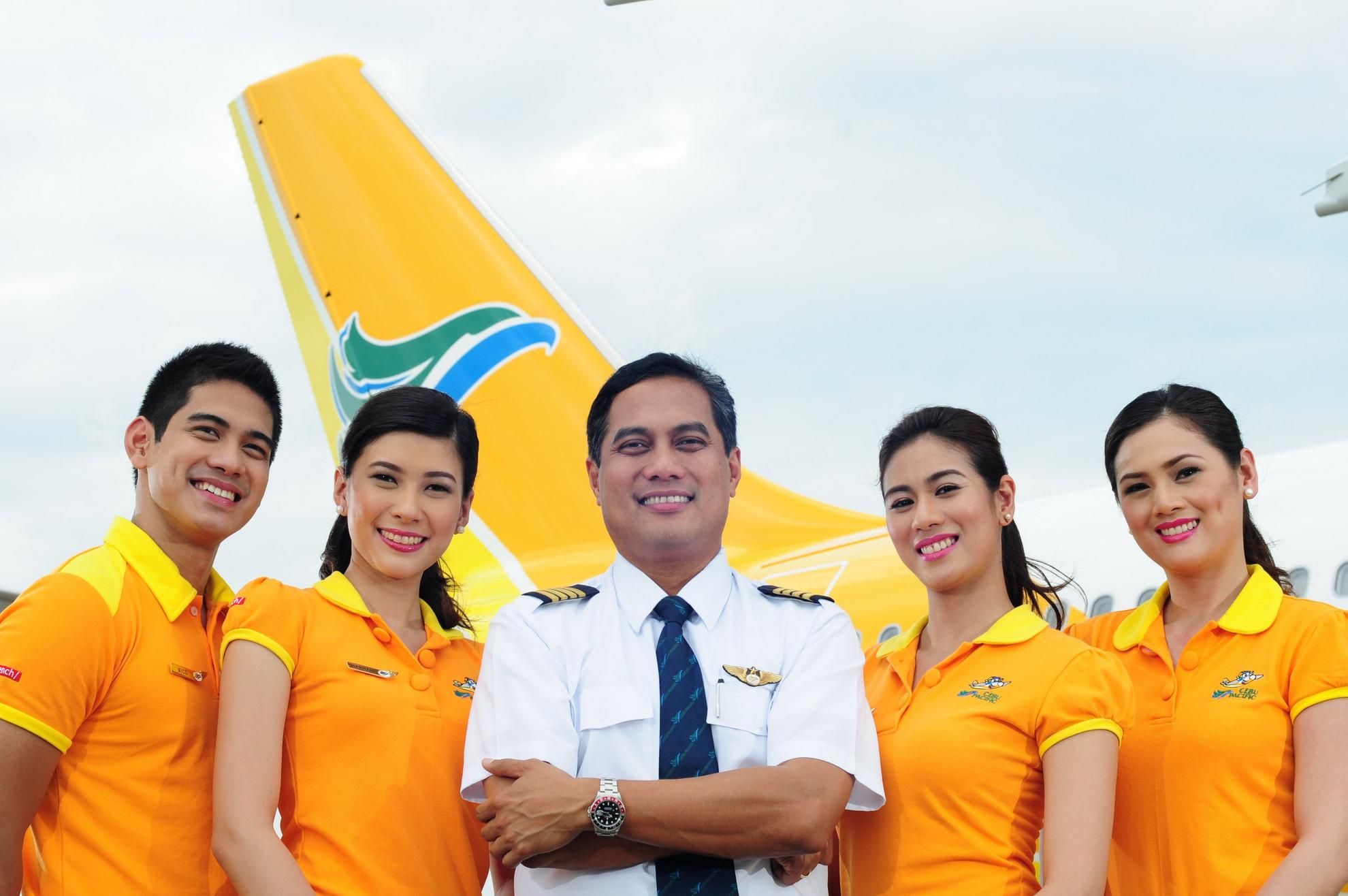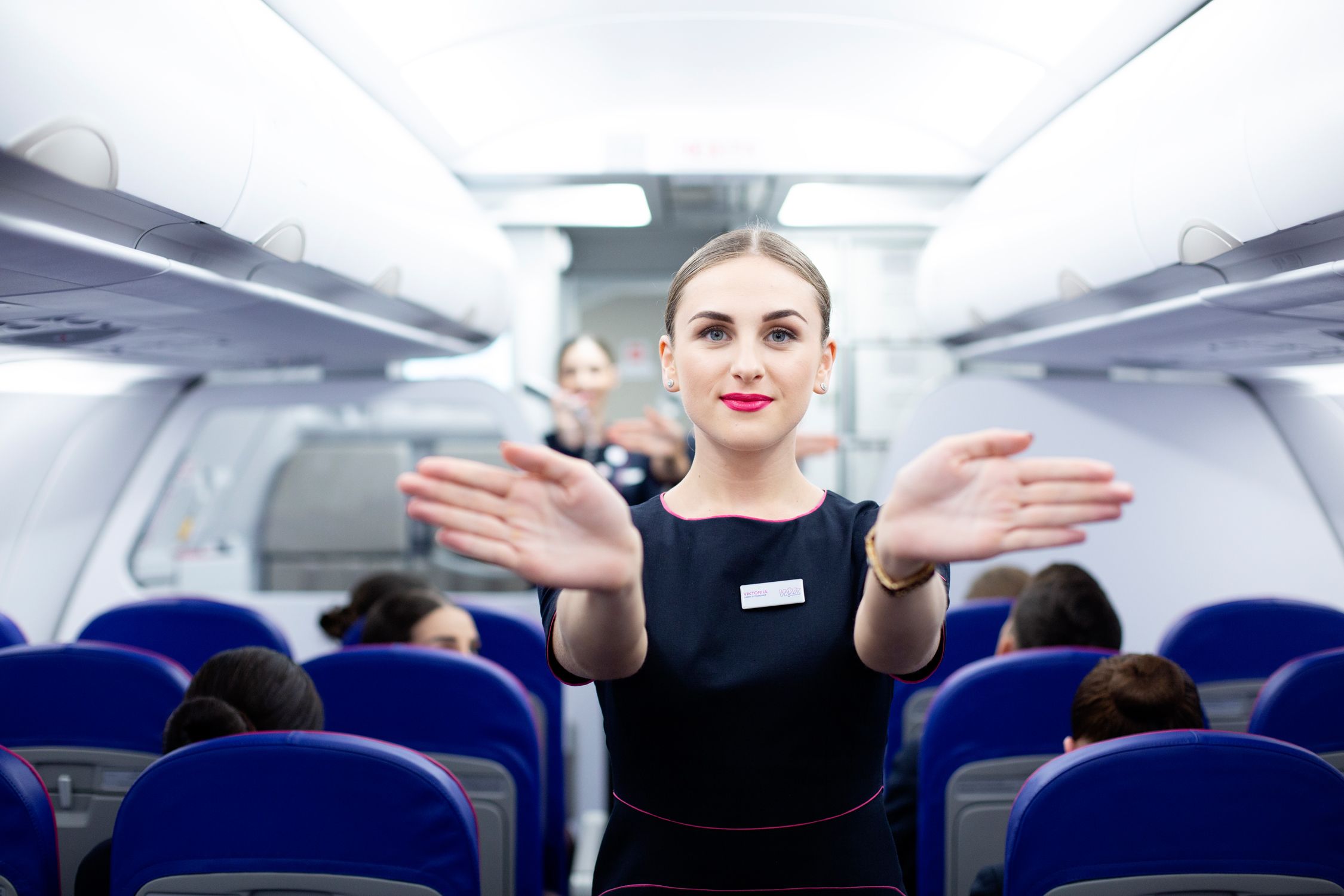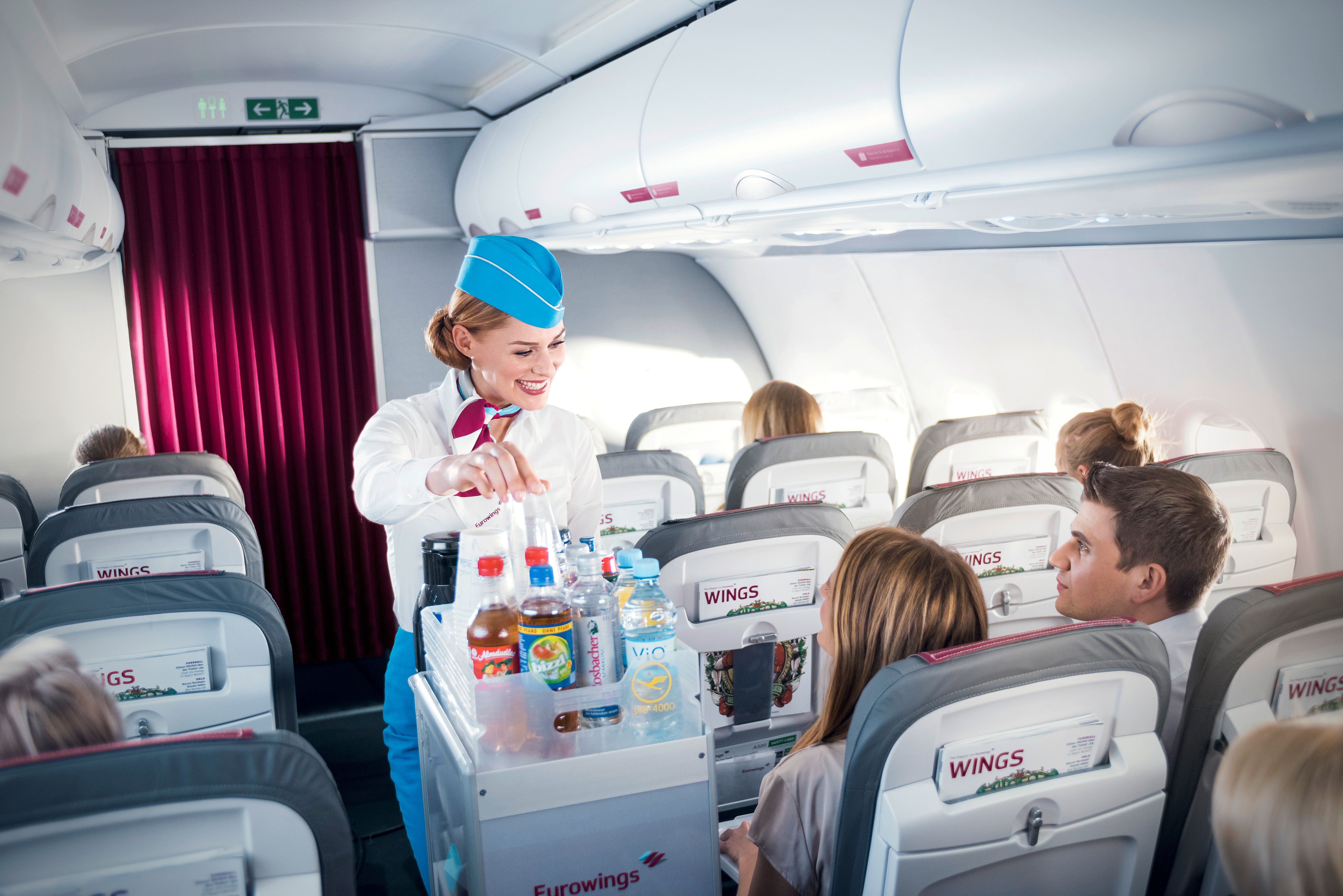It's a fact that cabin crew use their hands to talk, both in the cabin and in real-life. Ask them for directions, and you'll immediately know they are cabin crew. Communication in the cabin is not always easy, and sometimes cabin crew have to use visual signs or gestures to communicate with another crew member - sometimes even with passengers.
Pre-flight
It all starts with boarding the passengers onto the aircraft. The cabin crew will point you in the right direction of your seat, be it left or right or through the galley. They never point with their fingers as that is seen as rude and disrespectful in some cultures. They point with their hand, thumb in and discreetly at a low level. During the 'cabin secure' check, if the crew cannot see your seat belt is fastened, they may motion a closing of the seatbelt.
Sometimes, during taxiing when the seat belt sign is on, passengers may suddenly leave their seats to get something out of the overhead locker or to go the lavatory. In this case, the crew will try to catch the attention of the passenger or with a polite 'excuse me' and indicate that they need to sit down.
Safety demonstration
The manual safety demonstration is the most obvious use of hand gestures, in that cabin crew point out (again with their hand, not fingers) the safety card and the use of the seatbelt, oxygen mask, and life jacket. They also have to point out the emergency path lighting at floor level for finding your way to the emergency exit, when not clearly visible. The most important part, of course, is the pointing out of the nearest emergency exits. This is also performed by the cabin crew when the safety demonstration is via video or animation. The specific way in which it is done is practiced during training, until perfect.
Commands and gestures
Another part of training with strong visual cues is the evacuation commands. Cabin crew have to be forceful and strongly command the passengers in a potentially frightening and chaotic situation. Visual signs may include the command to 'wait' whilst the slide inflates, and 'jump' to leave the aircraft via the evacuation slide. There are also signals for things such as a blocked exit. Cabin crew also have hand gestures they use specifically in the cockpit in order to communicate with the flight crew.
Service style
Sometimes during service, the cabin crew run out of things in the cabin. It is just not practical to return to the galley to restock the cart as this would take too much time. Therefore, they will either press the passenger call bell to get another crew member's attention or, if in sight, signal to them. The second crew member will bring the requested item. It's the quickest and most efficient way.
Sometimes, they may visually hold up an item to say they have run out; for example, a bottle of water, or a bottle of red wine. But the most popular sign is making a 'T' sign with hands to signal the need for a pot of tea. For coffee, you will see a 'C' shape. Cabin crew also use the 'thumbs up' signal a lot during flights and sometimes the 'OK'. Cabin crew also point to their watch to time check, or for 'on the watch' (home base time), or to indicate a lack of time onboard.
Meals with humor
Sometimes it can be hard to communicate with passengers who may not speak the same language. In this case, during meal service, cabin crew may resort to clucking like a chicken and flapping their arms or mooing like a cow. This can be humorous and look very strange in the cabin, but most passengers will understand they can choose chicken or beef for their inflight meal. The point gets across.
In recent years, budget airline easyJet released a video of its cabin crew, indeed, giving visual signals of some of their buy-on-board products. These included gestures for a chicken or bacon baguette and a vegetable wrap. The signals will be spotted by the crew member in the galley, who can prepare and bring the requested items.
What hand signals or gestures have you seen cabin crew make? Let us know in the comments.




